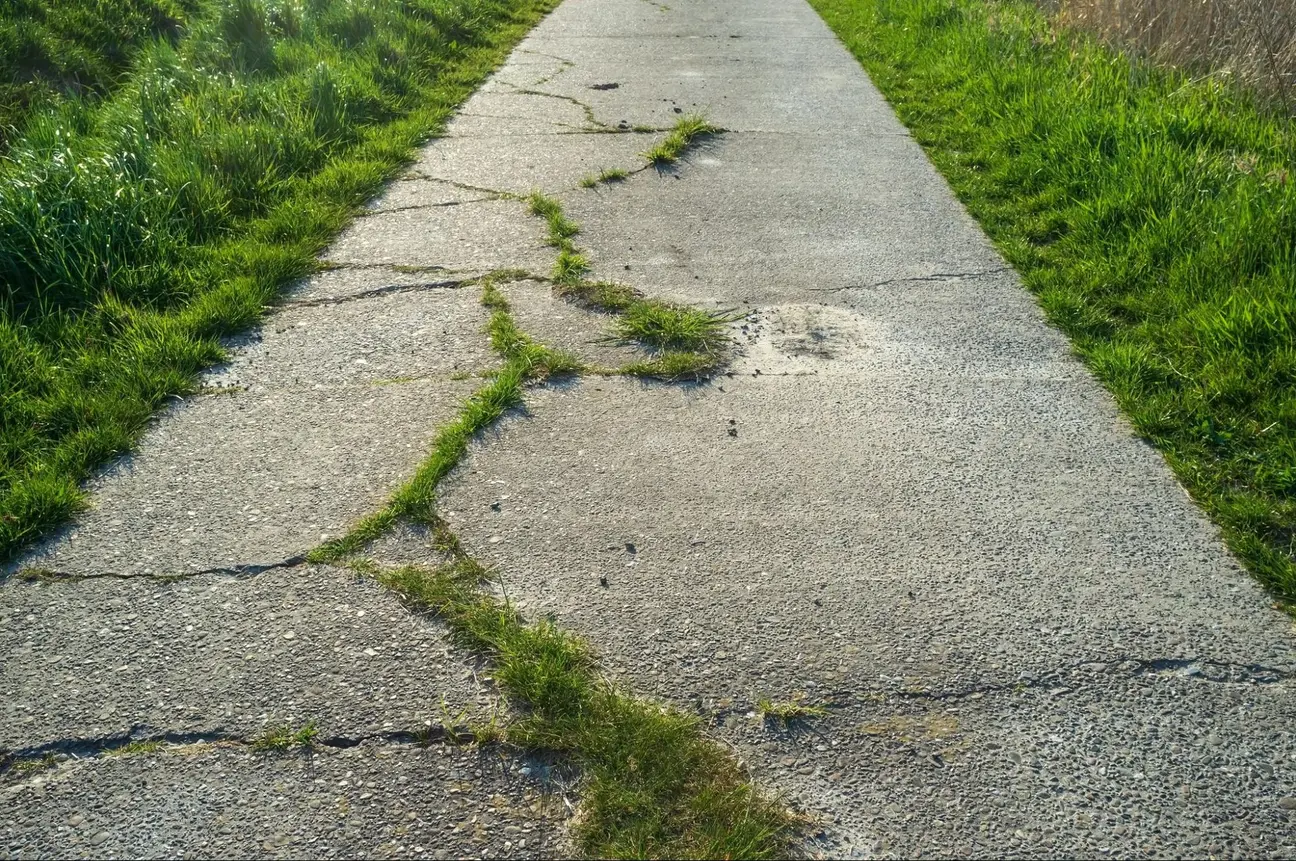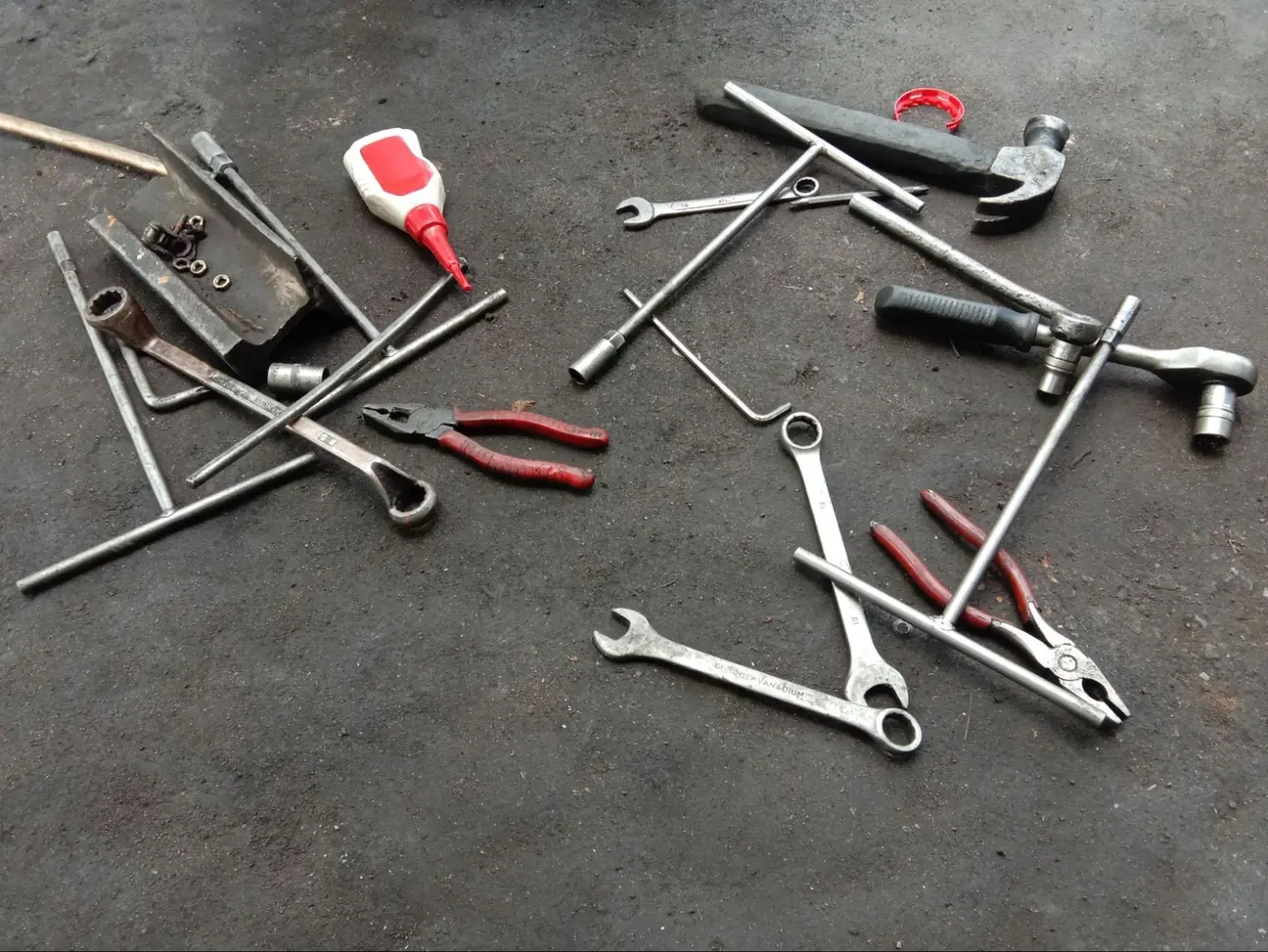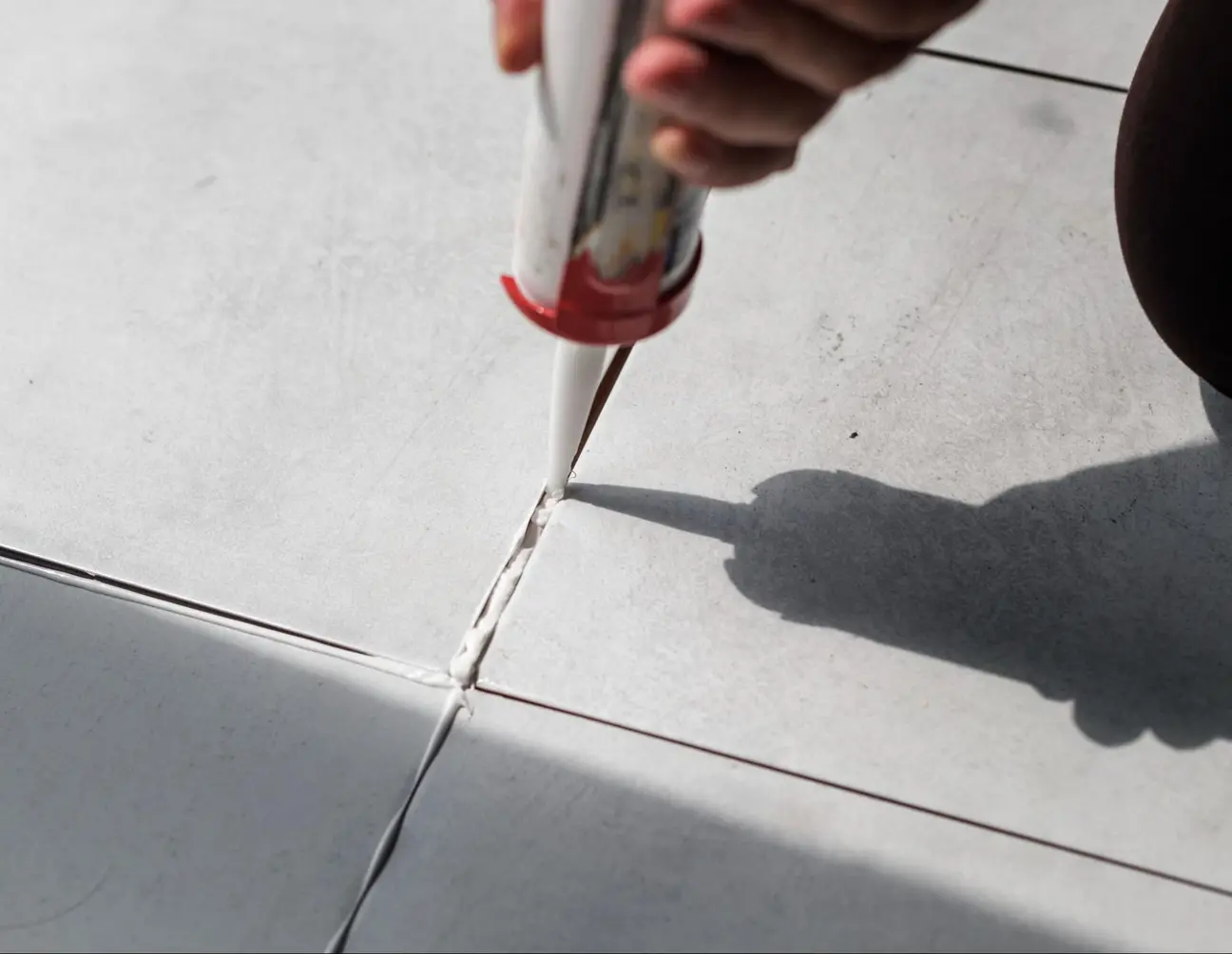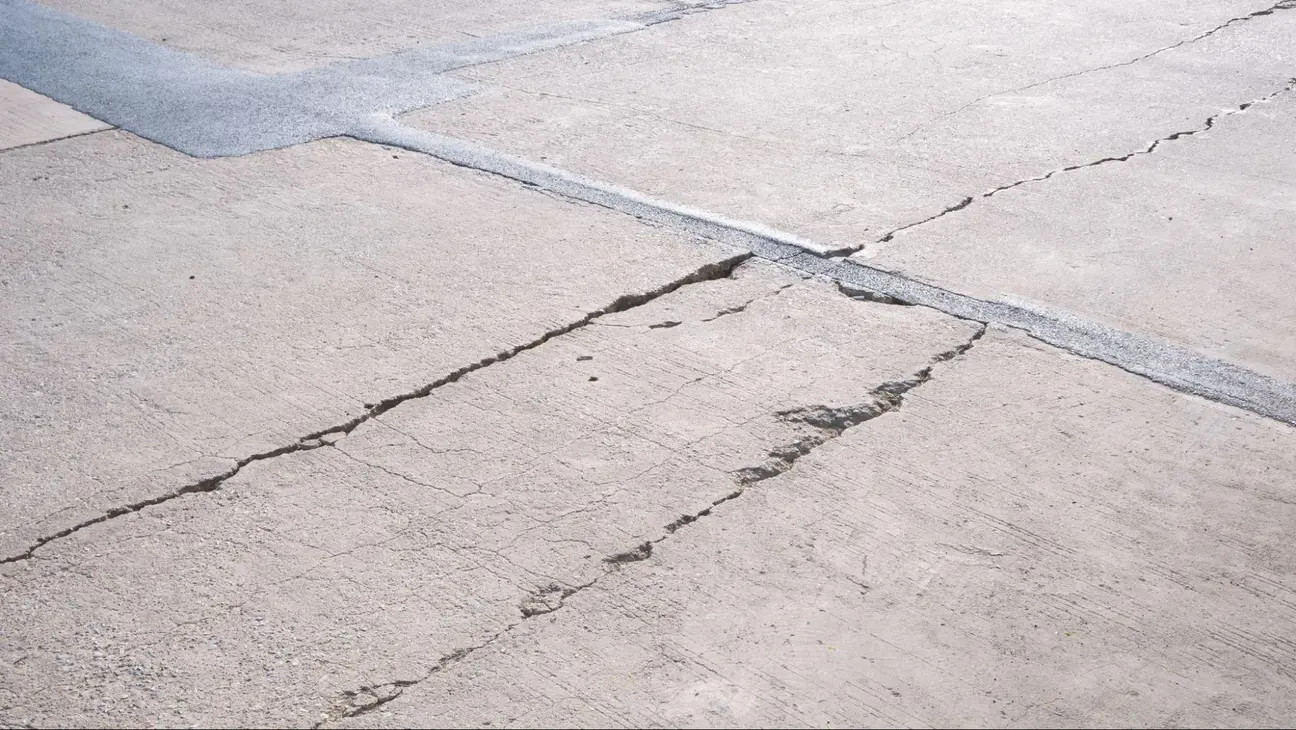
Cracks in concrete driveways and patios are common issues for many homeowners. If left untreated, these cracks can be unsightly and may even pose safety risks. You can fix most concrete cracks yourself using simple tools and materials from a hardware store.
The key to successful concrete repair is to address the problem early. Small cracks can quickly grow larger if ignored. By taking action now, you can prevent more serious damage and save money on costly repairs down the road.
Before starting any repair work, it’s crucial to assess the type and size of the crack. This will help you choose the correct repair method and materials. With the right approach, you can restore the look of your concrete surfaces and extend their lifespan.

Concrete cracks are common issues that can affect driveways and patios. They come in different types, have various causes, and range in severity. Knowing these factors will help you decide how to handle them.
Hairline cracks are thin and shallow. They often appear in new concrete as it dries and settles, and they are usually not a big problem.
Shrinkage cracks form when concrete dries too fast. They look like spider webs on the surface. These cracks are shallow and don’t affect the concrete’s strength.
Structural cracks are deeper and wider. They can go through the entire concrete slab. These are more serious and may need professional help.
Settling cracks occur when the ground under the concrete moves. They often appear as step cracks, with one side higher than the other.
Too much water in the concrete mix can lead to cracks. As the extra water dries, the concrete shrinks, and cracks form.
Rapid drying can cause surface cracks. That happens when hot, dry weather pulls moisture out of the concrete too quickly.
Overloading the concrete with heavy weights can cause cracks. That is common in driveways that weren’t made to hold large vehicles.
Soil movement under the concrete can create cracks. That includes soil that expands when wet or shrinks when dry.
Extreme temperature changes can cause concrete to crack. The material expands in heat and contracts in the cold, leading to stress.
Measure the width of the crack. Cracks under 1/4 inch wide are usually not serious, but wider cracks may need more attention.
Check if the crack goes all the way through the concrete. Surface cracks are less worrying than deep ones.
Look for uneven edges. If one side of the crack is higher, the ground might shift underneath.
Watch for growth. Mark the ends of the crack and check it over time. Growing cracks need prompt action.
Consider the crack’s location. Cracks near the edge of a slab or in corners are often less severe than those in the middle.

Fixing cracks in concrete driveways and patios requires the right materials and tools. The repair material and tools you choose will impact how well the repair progresses.
Epoxy or latex patching products, which come in tubes and can be squeezed directly into narrow cracks up to 1/8 inch wide, work well.
For wider cracks, use a cement-based patching compound. This type of filler bonds well with the existing concrete and can handle larger gaps.
Vinyl patching compound is another option for filling cracks. It’s easy to mix and apply with a trowel.
Use a concrete resurfacer for very large cracks or holes. This product can smooth out rough areas and fill deep gaps.
A wire brush is crucial for cleaning out cracks before filling. Use it to remove loose debris and create a clean surface for the repair material to bond.
A chisel and hammer help widen and shape cracks, if needed, creating more space for the repair material.
You’ll need a trowel to apply and smooth patching compounds. Choose a small, pointed trowel for precise application.
A caulk gun is necessary if tubed products are used. It allows for controlled application into narrow cracks.
Don’t forget safety gear. Wear gloves, safety glasses, and a dust mask to protect yourself while working with concrete materials.

Fixing cracks in concrete driveways and patios requires careful preparation, proper filling techniques, and adequate curing time. Follow these steps to ensure a lasting repair.
Start by cleaning the concrete crack thoroughly. Use a wire brush to remove loose debris and dirt. A vacuum or compressed air can help clear out fine particles.
For stubborn stains, apply a concrete cleaner and scrub. Rinse the area with clean water and let it dry completely.
If the crack is very narrow, use a chisel to widen it slightly. This gives the repair material more surface area to bond to.
Choose the right filler based on the crack size. For small cracks up to 1/8 inch wide, use an epoxy or latex patching product.
Larger cracks need a vinyl concrete patch or mortar mix. Mix the product according to package instructions.
Apply the filler using these steps:
For deep cracks, apply the filler in layers, allowing each to dry before adding the next.
Allow the filled crack to cure fully. That usually takes 24-48 hours, but check product instructions for exact times.
Keep the area moist during curing if using cement-based fillers. Cover with plastic sheeting to retain moisture.
Once cured, apply a concrete sealer over the repaired area. That helps protect against future cracking and moisture damage.
Use a roller or brush to apply the sealer evenly. Let it dry completely before walking or driving on the surface.
Regularly inspect and maintain the repaired area to prevent new cracks from forming.

Taking steps to prevent cracks and maintain your concrete surfaces can save you time and money in the long run. Regular upkeep and innovative practices help keep your driveway and patio looking great for years to come.
To avoid new cracks, start with proper installation. Make sure your concrete is poured on a well-compacted base. Use the right mix of concrete for your climate and intended use. Add control joints every 8 to 12 feet to allow for controlled cracking.
Seal your concrete every 3 to 5 years to keep moisture out. This stops water from seeping in and causing damage. Don’t plant trees close to concrete surfaces. Their roots can push up and crack the concrete over time.
In winter, use sand or kitty litter instead of salt for traction. Salt can damage concrete and lead to cracking. Avoid using metal shovels on your concrete. They can chip the surface and create weak spots.
Clean your concrete surfaces at least twice a year. Use a pressure washer or a stiff brush with soap and water to remove dirt and stains that can hide small cracks.
Fill small cracks as soon as you spot them. For cracks less than 1/8 inch wide, use a concrete patching product. For wider cracks, you may need a special concrete repair mix.
Check for drainage issues around your concrete. Water pooling can lead to cracks. Make sure your gutters direct water away from concrete surfaces.
In winter, remove snow promptly. Don’t let it melt and refreeze on the concrete, as this can cause cracks and surface damage.
For large gaps in driveways, use a two-part epoxy or polyurethane filler. These products are durable and can withstand vehicle traffic. They also expand and contract with temperature changes, preventing future cracking.
DIY repairs using concrete patching compounds or epoxy fillers are budget-friendly. These materials are readily available at hardware stores. To save money on filler material, consider using sand-mix concrete for wider cracks.
For small cracks, DIY repairs can cost between $10 and $50. Larger cracks or multiple repairs may run $100 to $300. Professional repairs typically start at $300 and can go up to $2,500 for extensive damage.
Fill cracks as soon as you notice them. Spring and fall are ideal times for repairs when temperatures are mild. Avoid extremely hot or cold weather, as it can affect the curing process of fillers and sealants.